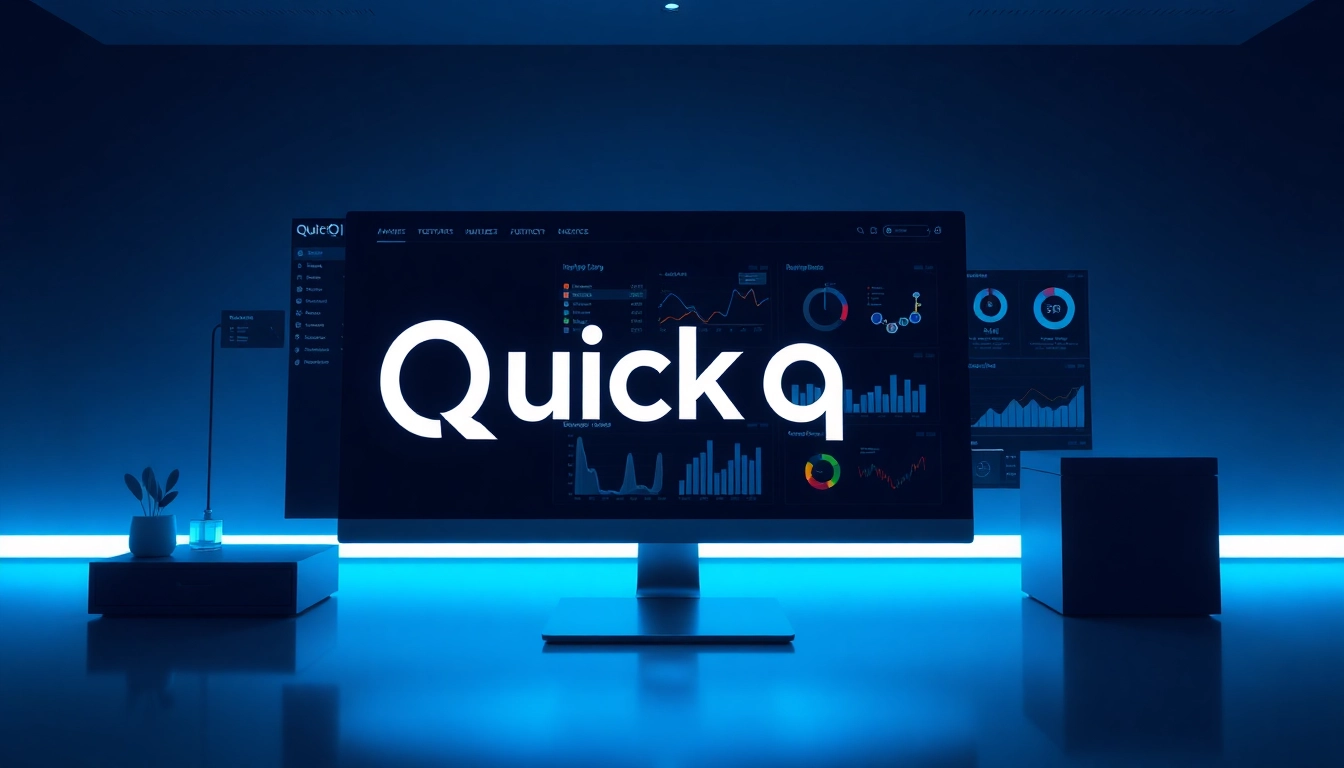Understanding AI Checkers
As the landscape of digital content creation evolves, the emergence of artificial intelligence (AI) has fostered new opportunities and challenges for writers, marketers, and educators alike. Within this context, AI checkers have become an indispensable tool for ensuring the quality and authenticity of written content. An ai checker enables users to discern human-generated text from content created by AI systems, providing insights that are crucial for maintaining integrity in writing. Let’s delve deeper into what AI checkers are and how they function.
What is an AI Checker?
AI checkers are sophisticated tools designed to assess text for signs of artificial intelligence generation. These platforms analyze various linguistic and structural features to detect patterns indicative of AI authorship. In some cases, they can dissect textual nuances down to the level of sentence structure or word choice, comparing these elements against vast databases of known AI behavior. Users typically paste their text into the checker, which then evaluates it for AI characteristics.
How AI Checkers Work
The mechanics behind AI checkers are rooted in machine learning and natural language processing (NLP). Here’s a simplified breakdown of the common processes involved:
- Data Training: AI checkers are trained on extensive datasets containing both AI-generated and human-written texts. By identifying patterns within this data, the models learn what constitutes typical AI behavior.
- Pattern Recognition: During analysis, the AI checker examines the input text for specific linguistic traits such as repetitive phrasing, lack of depth, or unnatural transitions, all of which can suggest AI authorship.
- Scoring: Once the text is analyzed, the checker assigns a score or a level of confidence regarding whether the content is likely AI-produced. This score is based on the identified patterns and the model’s understanding of what human-written content should entail.
Importance of Using AI Checkers
With the proliferation of AI-generated content, ensuring the authenticity of written work is paramount. AI checkers serve several critical functions:
- Maintaining Quality Standards: For businesses, having original and high-quality content is essential to uphold their brand integrity. AI checkers help maintain these standards by filtering out subpar AI-generated text.
- Academic Integrity: In educational settings, these tools can detect plagiarism and uphold academic honesty, ensuring that students submit their own original work.
- Legal Protection: Content creators must be cautious about copyright violations, and AI checkers can help point out similarities in neural network outputs to existing work.
Types of AI Checkers Available
Free vs Paid AI Checkers
AI checkers come in many forms, ranging from free to subscription-based services. Free checkers offer basic functionalities, making them accessible to casual users, whereas paid versions typically deliver more comprehensive features, such as in-depth analysis, integration with other tools, and customer support. Factors to consider when choosing between free and paid options include:
- Functionality: Paid versions often come equipped with advanced capabilities like grammar checks, plagiarism detection, and contextual analysis.
- Accuracy: Subscription-based services may provide higher accuracy rates and detailed reports compared to free checkers, which could result in false negatives or false positives.
- Use Cases: Businesses and educational institutions often benefit from paid services due to their scale and the need for robust solutions.
AI Checkers for Different Content Types
Not all AI checkers are created equal. Some specialize in analyzing specific types of content such as:
- Academic Papers: Tools that cater specifically to scholarly writing often focus on citation practices and originality.
- Web Content: AI checkers targeting marketing professionals may offer SEO optimization suggestions along with plagiarism detection.
- Creative Writing: For writers and authors, checkers that help enhance style and tone can be particularly useful in ensuring that the content resonates with readers.
Features to Look for in an AI Checker
When selecting an AI checker, consider these essential features:
- Comprehensive Analysis: Look for tools that evaluate multiple factors such as grammar, style, originality, and contextual understanding.
- User-Friendly Interface: An intuitive design allows users to navigate the tool effortlessly, making the upload and review process seamless.
- Integration Capabilities: Checkers that can integrate with other applications, such as word processors or content management systems, can enhance workflow efficiency.
- Custom Reports: The ability to generate detailed reports can provide users with actionable insights for future content improvements.
Benefits of Using an AI Checker
Enhancing Content Quality
The primary advantage of employing an AI checker lies in its potential to enhance the quality of content. By providing detailed feedback on areas such as phrasing, sentence structure, and coherence, these tools assist writers in refining their work. This is particularly evident in:
- Error Reduction: Automated checks diminish the chances of grammatical, typographical, and syntactic errors.
- Improved Readability: AI checkers often suggest edits that make the text more accessible and engaging to a broader audience.
- Skill Development: Writers can learn from the feedback provided by these checkers, facilitating their growth and understanding of effective writing techniques.
Time Savings and Efficiency
Manual proofreading and editing can be a time-consuming process. By integrating an AI checker into the writing workflow, users can significantly reduce the time spent on these tasks. Here’s how:
- Speed: AI checkers can deliver results in a fraction of the time it takes for a human editor to conduct the same analysis.
- Batch Processing: Users can quickly analyze multiple documents, enabling bulk reviews that save time, especially for businesses dealing with high volumes of content.
- Consistent Standards: AI checkers ensure uniformity in content quality across various pieces, which is vital for maintaining a professional image.
Impact on SEO and Engagement
Content that passes the AI detection test tends to perform better in search engine rankings, ultimately enhancing visibility. This is due to several factors:
- Quality Signals: Search engines prioritize high-quality, unique content. By ensuring the text is well-written and free of AI markers, AI checkers can indirectly aid SEO efforts.
- User Experience: Engaging, high-quality content tends to retain visitors longer, boosting overall engagement and conversion rates.
- Reduction in Bounce Rates: Content that is relevant and clear keeps readers engaged, reducing bounce rates which contribute positively to SEO.
Choosing the Right AI Checker
Assessing Your Needs
Selecting the most appropriate AI checker demands a thoughtful assessment of individual needs and objectives. Ask yourself the following questions:
- What type of content do I produce? Your choice might vary based on whether you focus on academic writing, marketing, or creative work.
- What’s my budget? Determine whether you need a free tool or are willing to invest in premium features for enhanced performance.
- Technical requirements: Assess if the AI checker integrates well with your existing software and platforms.
Comparing Popular AI Checkers
When exploring options, it helps to compare features, accuracy rates, user feedback, and costs. Some of the current popular AI checkers include:
- Grammarly: Widely known for its grammar-checking functionality, it also offers a capable AI detection feature.
- ZeroGPT: This tool specializes in detecting AI-generated text and is particularly favored for its accuracy.
- QuillBot: Known for paraphrasing, it also has effective AI detection capabilities.
User Reviews and Feedback
Seeking out user reviews and testimonials can provide valuable insights into the strengths and weaknesses of different AI checkers. Look for:
- Accuracy Ratings: Feedback regarding how accurately a tool identifies AI-generated text compared to human writing.
- Ease of Use: Assessments of the user experience can uncover common pain points or highlight user-friendly features.
- Customer Support: Insights on how responsive the provider is to issues or inquiries can be a determining factor for many users.
Implementing AI Checkers Effectively
Best Practices for Usage
To harness the full potential of AI checkers, consider these best practices:
- Integrate Early in Quality Control: Use AI checkers in the drafting stage to catch mistakes before reaching the final review.
- Embrace Continuous Learning: Use the feedback provided by AI checkers to enhance your writing skills over time.
- Customize Feedback Settings: Adjust settings to focus on areas most pertinent to your writing needs, such as style, grammar, or originality.
Integrating AI Checkers into Your Workflow
For organizations looking to streamline their content production processes, integrating AI checkers involves:
- Collaboration Tools: Utilize AI checkers that offer integration capabilities with content management systems, allowing seamless transitions.
- Standard Operating Procedures: Develop guidelines for team members on when and how to use AI checkers within the content creation process.
- Regular Training: Provide employees with training sessions on how to effectively use AI checkers and interpret the results.
Tracking Improvements and Results
Lastly, measuring the impact of AI checkers on your writing quality can be done through the following methods:
- Engagement Metrics: Monitor changes to engagement statistics such as time on page and bounce rates to assess content performance.
- Feedback Collection: Regularly solicit feedback from your audience about the clarity and quality of the content.
- Revisiting AI Check Results: Continuously review and discuss AI checker outcomes to identify recurring issues and potential areas for improvement.















Leave a Reply